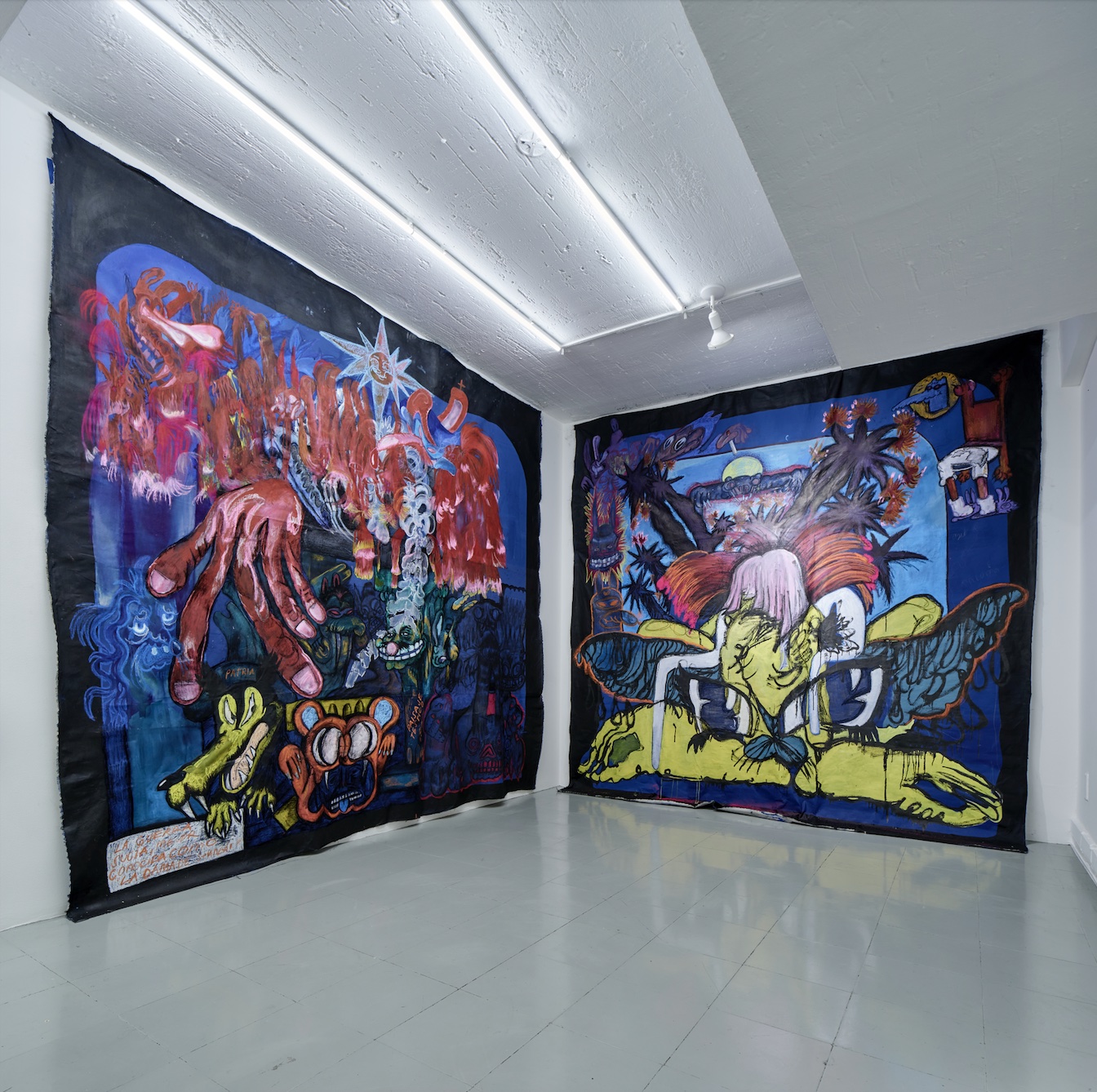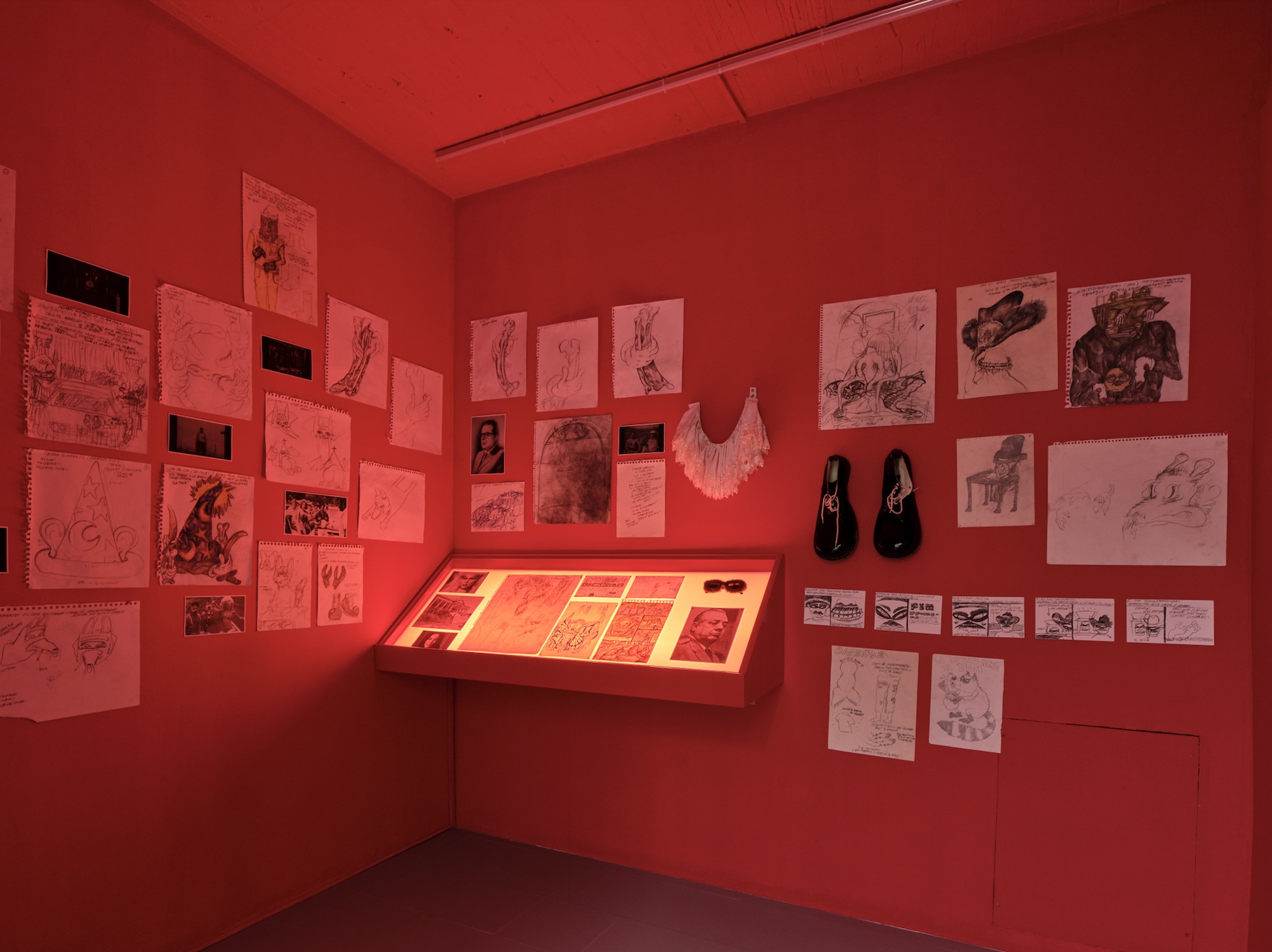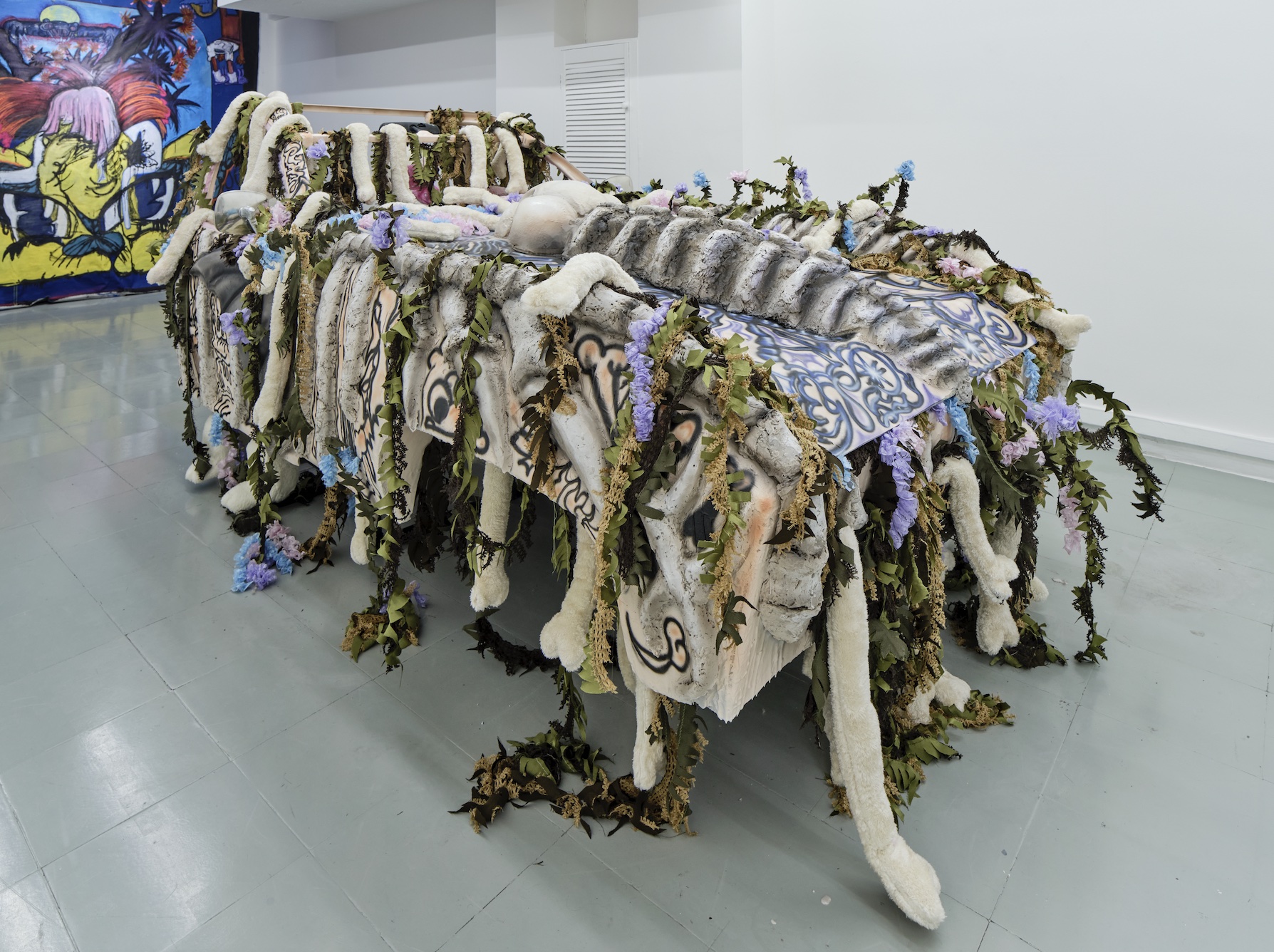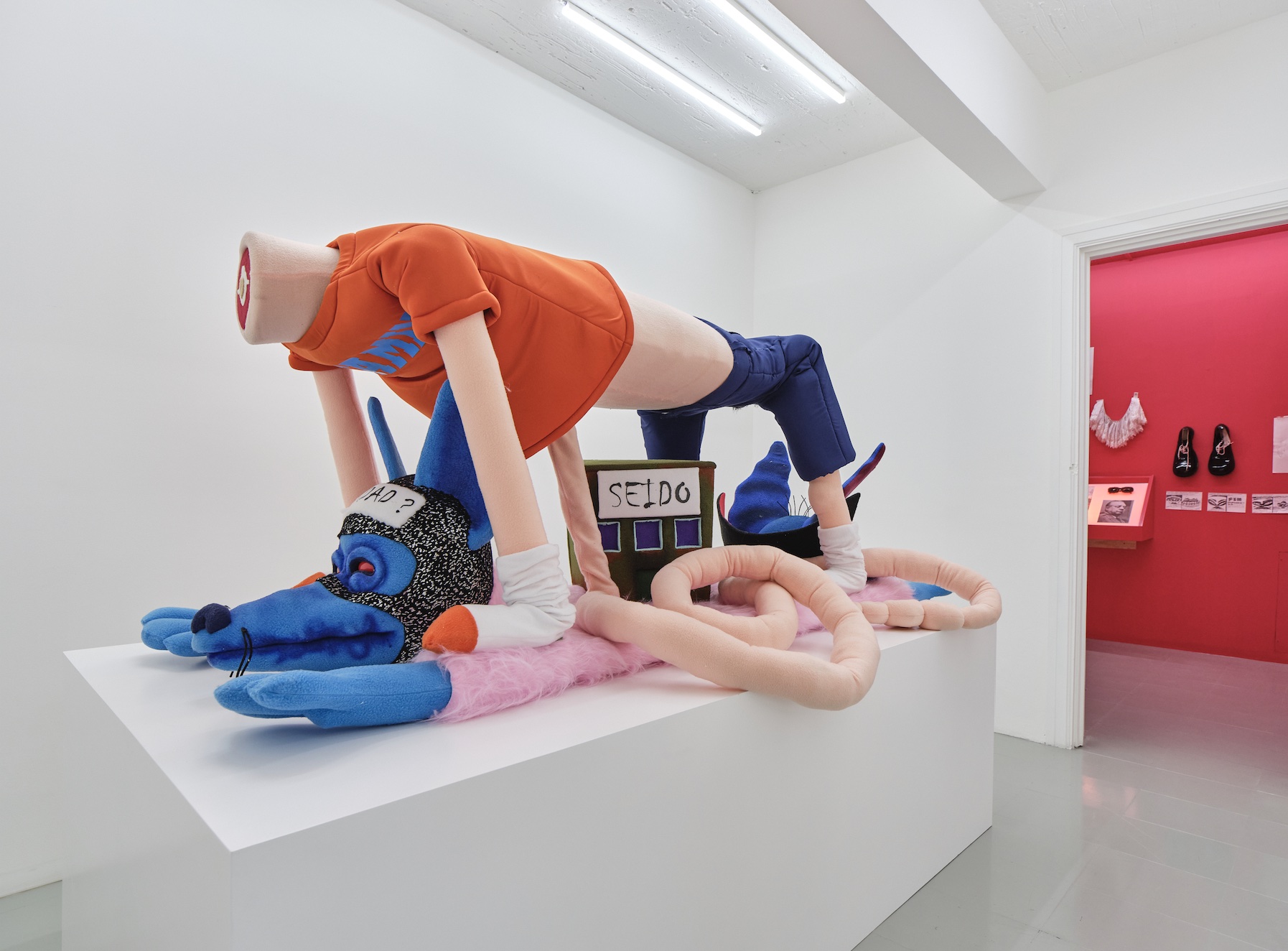
Review
Voices of the ghost inhabiting the landscape: Paloma Contreras Lomas at Pequod Co.
by M.S. Yániz
Reading time
8 min
The shadows of the abyss are like the petals of a monstrous flower
that shall blossom within the skull and expand the mind
beyond what any man can bear
Death by Landscape, Elvia Wilk
The sensitivity of Paloma Contreras Lomas can be understood literarily. The world within a novel is written language. The narrator in the free indirect style (the hegemonic form of narration currently) gives voice to trees, streets, countries, territories, objects, and materials, allowing for the delegation and postponement of the voice. In other words, alongside narration, dialogues of people and things are inserted. The texture of this form of discourse is immersive but elusive. It is not clear who is speaking or how, but there is always someone or something speaking. Sometimes a dialogue can begin that steals the voice from the narrator.
The same texture allowed me to enter last 11/11 into Sombras nada más (espíritu TV) [Shadows and Nothing More (spirit TV)] by Paloma Contreras Lomas at Pequod Co. In the form of a prologue, she says, "This exhibition is dedicated to someone else's ghosts, to those of my father." He and his brother (father and uncle of the artist) are the ones who carry and unify part of the exhibition's narrative. At the entrance of the gallery, with your back to it, a video is exhibited where scenes of people interacting with the landscape are dramatized while events that occurred during the Cold War in Acapulco, Mexico are narrated. It's interesting that before entering the main space to see the exhibition, you already hear whispers of what will be stories. The narrative, weaving the works, is the result of a familial-national investigation.
The exhibition has at least three moments: the investigation of family stories, the narrative articulation of information, and the visual artwork. Without subordinating, each moment is separated in different rooms and channels of information.

Upon entering, you see a kind of amorphous stuffed animal on the reception desk along with the QR code of the exhibition text, in front of this, the drawing Espiritu TV (poster) [Spirit TV (poster)], at ground level a Disneyesque-night hat (the hat seems to be the representative form of Paloma Contreras' art), and on the wall, the acknowledgments of the show written with a faint pencil or pen (to be erased later), as if those names were already ghosts within the gallery.
You keep walking, and in the main hall imposes what is perhaps the central piece: La guerra sucia o la dama de Shangái [The Dirty War or the Lady of Shanghai] (2023): a tuned ghost-skeleton car, death and a girly neotropical landscape, or, as she calls it, softie-cyborg. The car is beautiful and padded, but it is creepy that just above it is the screen with the video narrating violent events of the artist's family as well as others. This possibly could be the game: to establish that the landscape is as attractive as it is dangerous. In front of the car there are two large paintings, Macho probado, macho calado (2023), and Ahí se dan su quién vive (Coatlicue) (2023). Both are fictional and monstrous pop-political allegories.

In the adjacent room is perhaps the most cryptic piece, SIEDO, formerly SEIDO (2023), a plush montage: a headless body with feet for hands and a T-shirt stamped with the Mexican territory in an arched position upside down whose pants broke, penis exposed and with eyes and ears on a church in Guadalajara from which pink buttocks and feet emerge through the door. Next to this, a box-building whose edge is bleeding. Underneath all the figures, on one side, a creature-rug with a bat face and elephant fangs, on the other, a smoking wolf with a band on its forehead with the legend "TRUE?". One does not really know what to think, whether it is Francisco, Joaquín (Paloma’s relatives), or an exotic and pop allegory where everyone speaks at the same time, but faced with the question and the complexity of all the symbols, the only answer is yes, it is true.

Towards the back, in the last room, as an epilogue, in a dark room with a red light, the backstage of the exhibition is shown. On the walls and in a lightbox, the notes, video storyboards, drawings, and research by Paloma Contreras to create Sombras nada más (espíritu Tv) are displayed.
The question that arises now is how this series of instances are interconnected. Fueled by fantasy literature by writers like Mariana Enríquez or Liliana Colanzi and a lot of Narcos Mexico on Netflix, Paloma Contreras Lomas creates her art as if everything she works with—in research and in the artwork—is besieged by ghosts. In this exhibition, it was Francisco, Paloma's uncle, who had to use his body to show his family ghosts, which are also those of Mexico: violence, the guerra sucia [dirty war], and the State. The atmosphere she creates with the red light, murmuring audio, and vibrant, albeit dark, colors is the twilight. You know something is happening, even if you can't see it clearly. Like in free indirect style.
The gallery text says: "In a country where opacity reigns and multiple truths circulate, Contreras Lomas aims to create fictions of representation and historical recreation mapped by an omnipresent narrator, who, at the end of the night, is the only one we can trust." But one must wonder if representational fictions oppose the opacity of the country in the form of clarity. It seems rather that these fictions and historical recreations mimic the opacity, I don't know if as skill. The symbols within the exhibition are hidden, elusive, denied, which seems to be in accordance with the situation, since it is not about showing history as it was or unraveling some trauma, but, returning to the free indirect style, delegating it to language, voice and the ghosts of others. I did not experience the guerra sucia [dirty war], and maybe the signs escaped me there, but it revived the anxiety of when I got lost as a child in the Ajusco, and helicopters and police came to look for me. A landscape that I adored turned sinister. Although the objective correlation is different, the exhibition creates empathy in the experience. The large-format paintings alongside the audio construct that liminal space where memory, fear, and politics haunt the viewer.

In addition to the exhibition's mode of discourse and its references, there is something in Paloma Contreras' production that also belongs to the literary world. Anyone familiar with the artist's work could notice that this exhibition resembles other shows she has done since 2016. Considering the triad of research/narration/artwork, Sombras nada más (espíritu Tv) reflects her past pieces but not as repetition. I like to think that each public appearance of Contreras Lomas's art is the delivery of a novel under construction.

For a long time, Contreras Lomas has linked fiction with art, like when she said, "How one sells their own fiction, that is contemporary art"; in this exhibition: "I like fictions because they protect us. That's the best thing about being an artist." In these two sentences, the issue of money and the autonomy of art is highlighted. Both are conditions for the development of the novel as a popular genre in the 19th century. Contreras Lomas writes and has been doing so for a long time; perhaps one day, what she has written can be published. But I am not saying that her exhibitions are deliveries of a novel for that reason, but rather because in the continuum you enter a kind of environment or world view. And as I have argued, there are many indications that her works contain voices and stories arising from symbols: matters that are narrated and allow imagining some continuity. The more I see her work, which reveals her way of life by involving biographical matters, the more I understand some impulses she has had in choosing themes or stories in her past work. As if conceptually the successive chapters illuminated the previous ones. It matters why certain narratives stand out to someone.
Like potential stories "narrated by the landscape about historical events for which there are no official records"* Sombras nada más (espíritu Tv) combines imaginaries whose languages and symbols make national specters come up that become intimate. Francisco and Joaquín take the agency to be the Franciscos and Joaquins of all of us who live in this country that makes people disappear, whose guilt is usually attributed to abstract entities such as the landscape, the State, criminals, politics, or evil. It invites you to the depth of the ghostly psyche of a territory that seduces you with landscapes of stuffed animals, multimedia, and painting.
Translated to English by Sebastián Antón-Ojeda
*Statements by Pequod. Co
Published on December 17 2023